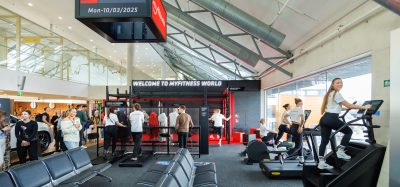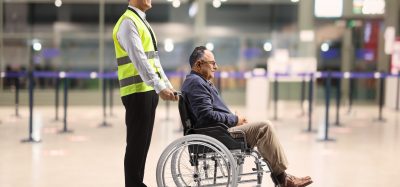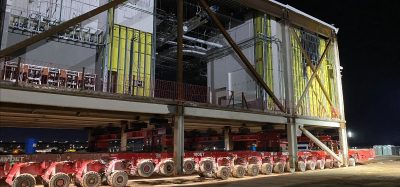Interview spotlight: Tijen Cirig
- Like
- Digg
- Del
- Tumblr
- VKontakte
- Buffer
- Love This
- Odnoklassniki
- Meneame
- Blogger
- Amazon
- Yahoo Mail
- Gmail
- AOL
- Newsvine
- HackerNews
- Evernote
- MySpace
- Mail.ru
- Viadeo
- Line
- Comments
- Yummly
- SMS
- Viber
- Telegram
- Subscribe
- Skype
- Facebook Messenger
- Kakao
- LiveJournal
- Yammer
- Edgar
- Fintel
- Mix
- Instapaper
- Copy Link
Posted: 1 March 2022 | Tijen Cirig | No comments yet
Tijen Cirig, Senior Director for Airports at Honeywell, speaks to International Airport Review about the airport industry’s recovery, how the passenger experience is evolving, sustainability issues, and operational efficiency.
We’re heading into “year three” of the COVID-19 pandemic, what do you anticipate for the airport industry’s continued recovery?
Looking at the airport industry statistics at the end of 2021, we can see that the recovery is a continuous process. There are differences in the way air travel is expected to recover in various regions of the world with North America outperforming other regions, and the Middle East remaining the most impacted, according to ACI World’s reports. The recent holiday season showed us that consumer confidence in air travel has returned for many, yet airlines must also manage new challenges such as staff shortages to avoid cancellations.
Overall, there is a sense of optimism. This comes from the opportunity the airport industry has to create healthier, safer environments to restore passenger confidence and mitigate risks; commit to sustainability strategies that are embedded in the business model; as well as operational efficiency, cost control and new revenue streams.
Which are the most important changes airports should invest in for passenger experience in the medium and long-term?
The first focus area is creating and maintaining healthier environments in airports. This can be done by improving indoor air quality to help mitigate potential airborne contaminants; monitoring and communicating IAW parameters through dashboards to show that air travel is safe and help restore passenger confidence; managing varying occupancy density and numerous zones with different heating and cooling demand, identifying potential risks and non-compliance with guidelines such as mask wearing or social distancing.
The second is to digitise the passenger experience. Apps and biometric technologies are helping airports and airlines to transition towards a contactless, self-service passenger and staff journey that can now start off-airport and give more control and responsibility to customers with online check-in, complete health forms, book slots for security check-in prior to getting to the airport and once in airport, order a meal, shop online for duty free and others complemented by robotic delivery services to gate and more.
Honeywell is working with airports to deploy solutions that create a healthier and safer airport experience to help build passenger confidence. Honeywell’s Healthy Buildings solutions offer customised offerings for airports to address these challenges without the need to replace existing infrastructure. Honeywell’s Healthy Buildings solutions integrate air quality, safety and security technologies along with advanced analytics to help airport operators improve the health of their buildings, operate more cleanly and safely, comply with new guidelines, and help reassure passengers and staff. Honeywell has an advanced indoor air quality portfolio that can help improve occupant wellbeing, meet energy efficiency goals, and change the way that passengers and staff experience an airport.
Why is sustainability a major focus area for airports?
The focus on sustainability is driven by the increasing global awareness on the climate crisis and the international efforts to cut carbon emissions.
Aviation is one of the most quoted industries when it comes of the public pressure to reduce its carbon footprint. In November, the U.S. announced its plan of achieving net zero greenhouse gas emissions from the domestic aviation sector by 2050. According to the FAA, the decarbonisation of the sector should be achieved through four major initiatives: sustainable fuel, new aircraft technologies, increasing operations efficiency as well as cutting airport emissions, and boosting airport resilience.
Honeywell has deployed dedicated solutions to help airports improve energy efficiency and help accelerate their sustainability goals using real-time analytics and AI. In the complex airport ecosystem, technology can help streamline the use of existing airport assets such as gates and runways, improving the real-time readiness of the terminal for flows of passengers, baggage and aircrafts, and by using intelligent energy management throughout the airport.
Integrated airport technology solutions can leverage airport operational database information, which can improve aircraft ground movement management and turnaround for on-time departures, decrease CO2 footprint, and improve terminal preparedness. Integration can aid efficiency in optimising airside runway systems, offering the ability to control and send aircraft on the most efficient route, as well as for easy and safe docking.
Honeywell’s sustainability solutions are based on using a phased approach to achieving net zero that can be aligned with the investment level and the strategy of the beneficiary: first assess through a fast, repeatable, scalable digitised platform at portfolio level, gaining real-time visibility to systems for reducing energy consumption, followed by advanced AI/ML for efficiency and occupant comfort and identifying CAPEX efficient retrofit projects to reduce embodied carbon.
Honeywell recently committed to becoming carbon neutral in its operations and facilities by 2035, a pledge underpinned by its portfolio of technologies that help industries meet their environmental commitments.
How can airports improve operational efficiency and revenues while cutting down on costs
Technology can help airports create efficiencies and more easily navigate challenges. Airports can leverage their existing technologies through optimisation with touchless passenger self-service and data analytics-driven asset and resource utilisation. There’s also an opportunity to build an airport that is future‑ready – this means a facility that can address the needs of the current situation and create a connected, integrated infrastructure. An airport that builds on an open Internet of Things (IoT) infrastructure and process improvements will be well situated for both near‑term recovery and long‑term success.
One way to bring new agility and cost efficiency to airport operations is by deploying tools that provide visualisation into how airport assets are used and performing, which can provide better agility, integration and cost efficiency. An increasing number of airport-specific applications and platforms are available ‘as a service’ today, offering nimble implementations with automated updates, predictable pricing, greater flexibility and rapid scalability when required. End-to-end integration, that links airport IT and OT systems across both landside and airside, can also provide a strategic advantage in pursuing a sustainable recovery.
Technology can help streamline the use of existing airport assets such as gates and runways, improving the real-time readiness of the terminal for flows of passengers, baggage and aircrafts and by using intelligent energy management throughout the airport.
With the financial impact the pandemic had on the industry, are airports in the position to make such investments now?
There are many ways that airports can work to drive financial growth and boost revenues. Oftentimes investing in new technologies may actually help reduce OPEX and not require a complete rip and replace of existing systems. There are upgrades that can be made that do not require a CAPEX investment and can ultimately reduce overall costs.
Many governments worldwide are also investing heavily in the airport industry’s recovery. Programmes such as the Airport Rescue Grants in the U.S. and similar relief funds in Europe and other regions can help airports invest wisely to quickly adapt to new requirements as well as for their long-term development.
Ultimately, the airports that invest in changes now will likely be best positioned for long‑term recovery and better able to handle more traffic in the future.


Issue
Related topics
COVID-19, Digital transformation, New technologies, Passenger experience and seamless travel, Regulation and Legislation, Sustainability, Sustainable Aviation Fuel (SAF), Sustainable development


















